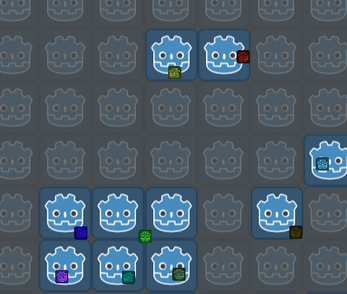Defect Detector Array Simulation
A simulation to illustrate a method of calculating total defect area in a phospholipid membrane, by creating a simulated detector array where the individual detector cells appear with no transparency if occupied, and semi-transparent if unoccupied. The particles in this sense would represent lipid headgroups.
Press Enter to spawn particles with random location and velocity.
Press Up arrow to speed up particles.
Press down arrow to make particles invisible, to view dynamics of "defects".
Note 1: The motion of particles isn't physically accurate - this is meant to be a simple illustration coded in a matter of minutes. Particle collisions do not obey conservation of momentum, but rather if a particle detects a collision with a surface, it's velocity is "reversed" in the direction of the normal vector of the colliding surface.
Note 2: This specifically is meant to contrast the dynamics of random defects in a generic physical system with that of defects in a lipid membrane, where the balance of diffusion and repulsion/attraction of lipids in membrane are the main factors modulating dynamics of defects.
For 100% random lipid diffusion this simulation is a good approximation, while for strongly interacting lipids and fatty acids, sterols, etc., this is a very poor approximation, as defects may be subject to Bose-Einstein condensation.
Made in Godot.
| Status | Released |
| Platforms | HTML5 |
| Author | Owen Tyoe |
| Genre | Educational |
| Made with | Godot |

Leave a comment
Log in with itch.io to leave a comment.